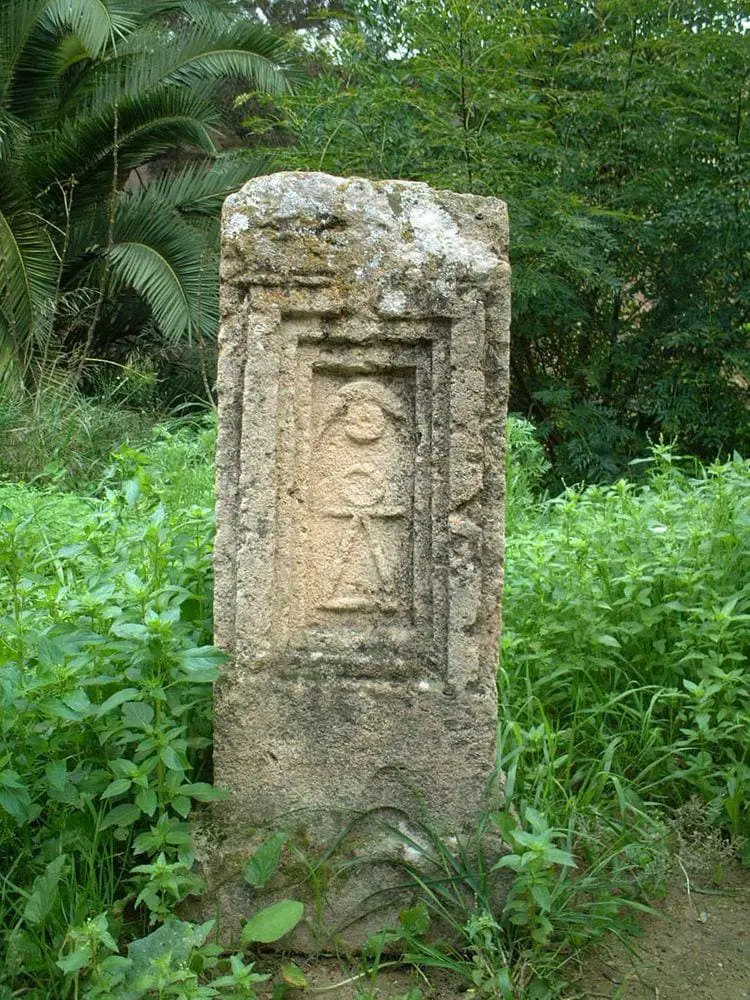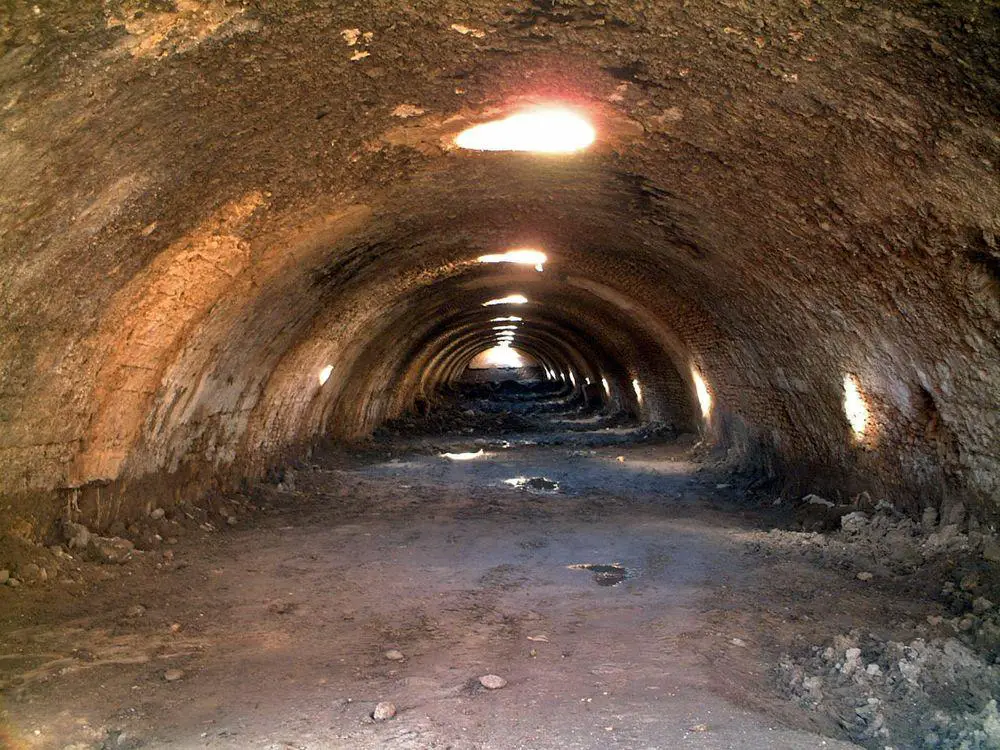Ancient cities and towns 🢔 Settlements 🢔 Archaeological wonders 🢔 Categories of wonders
Wonder
Ancient Carthage
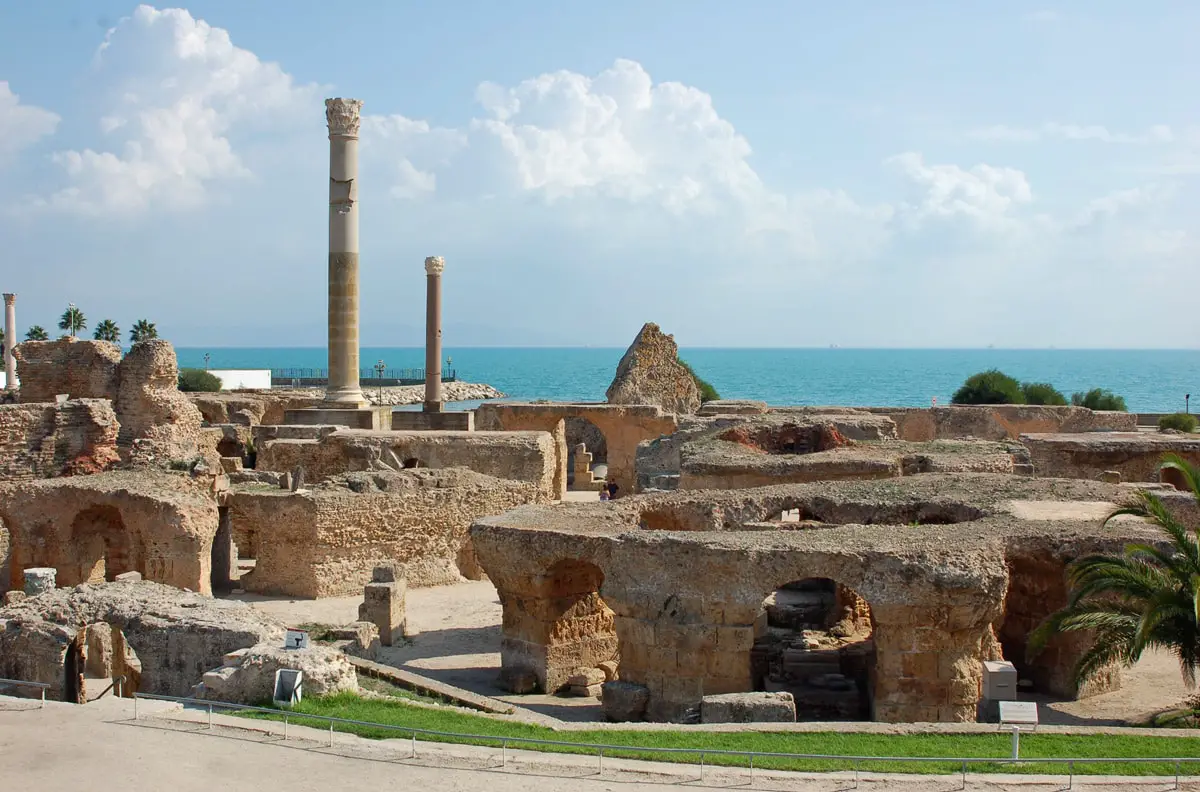
 In short
In short
There is little left of the ancient metropolis of Mediterranean – Carthage. Here and there among the buildings in the eastern suburbs of Tunis are seen unsightly ruins of Roman structures and rare remnants of Carthaginian culture. It is hard to believe that this was the center of power in the Mediterranean region, the main rival of Rome.
 51.0%
51.0%
GPS coordinates
Location, address
Name in Arabic
Founded
Period of flourishing
Area
UNESCO World Heritage status
Map of the site
If you see this after your page is loaded completely, leafletJS files are missing.
 In detail
In detail
Escape of Dido
This is how the story of Carthage started according to Greek legends:
A group of Phoenician noblemen managed to escape political turmoil in their home country located in the area of contemporary Lebanon. This group was led by Elissa or Dido, the first queen of Carthage.
Phoenicians stopped at Tunis Bay and built their settlement on a hill named Byrsa (citadel in Phoenician). According to legend Berber king allowed a temporary refuge as large as could be encompassed by an oxhide. Phoenicians cut an oxhide in narrow strips and managed to encircle the whole hill.
Rise of Carthagian empire
This event happened in the time period between 846 and 813 BC.
Colonists together with local Berbers built a new city. Phoenicians named the city Qart-ḥadašt – New City in a meaning that this is the new Tyre (capital of Phoenicia).
Soon it evolved into a rich and influential city, using its location in the centre of Mediterranean region. Thus, Aristotle considered that this is one of the best governed cities and states in the world.
Carthagians developed powerful navy – ships were built using methods of serial production and multiple sailors were well trained. Carthage had a well organized network of trade routes in Mediterranean and Atlantic Ocean, as well as across the Sahara desert, it became a centre of empire, encompassing coastline and islands of Western Mediterranean.
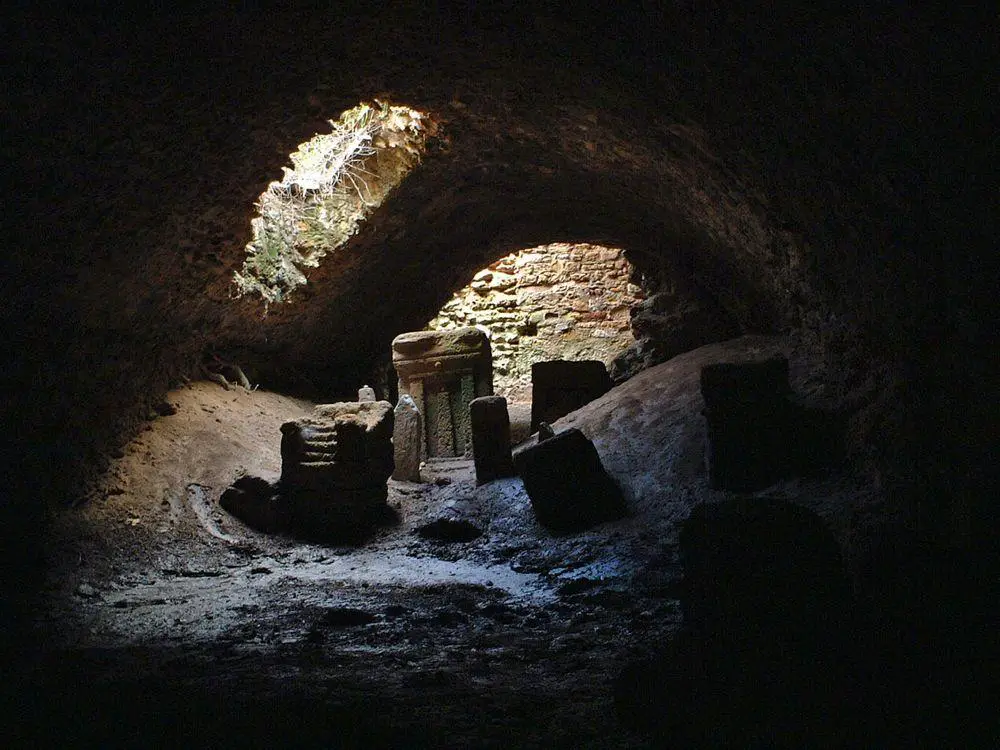
Possible child sacrifice by Carthagians
At least one issue regarding the Carthagians is very emotive and controversial: possible child sacrifice.
Most likely Carthage – city and whole empire – was a victim of bad publicity. For long centuries the main sources of information about Carthage have been Greek and Roman historians, who were hostile towards Carthage.
According to these authors children were sacrificed by their parents to deities – Cronus and Ba’al Hammon. Children were placed alive in the hands of bronze statue and roasted to death.
There is an eerie place in Carthage – so called Tophet of Salammbó, a shrine and necropolis, where remains of children have been found in large amount. Now this menacing site is located under a Roman built vault.
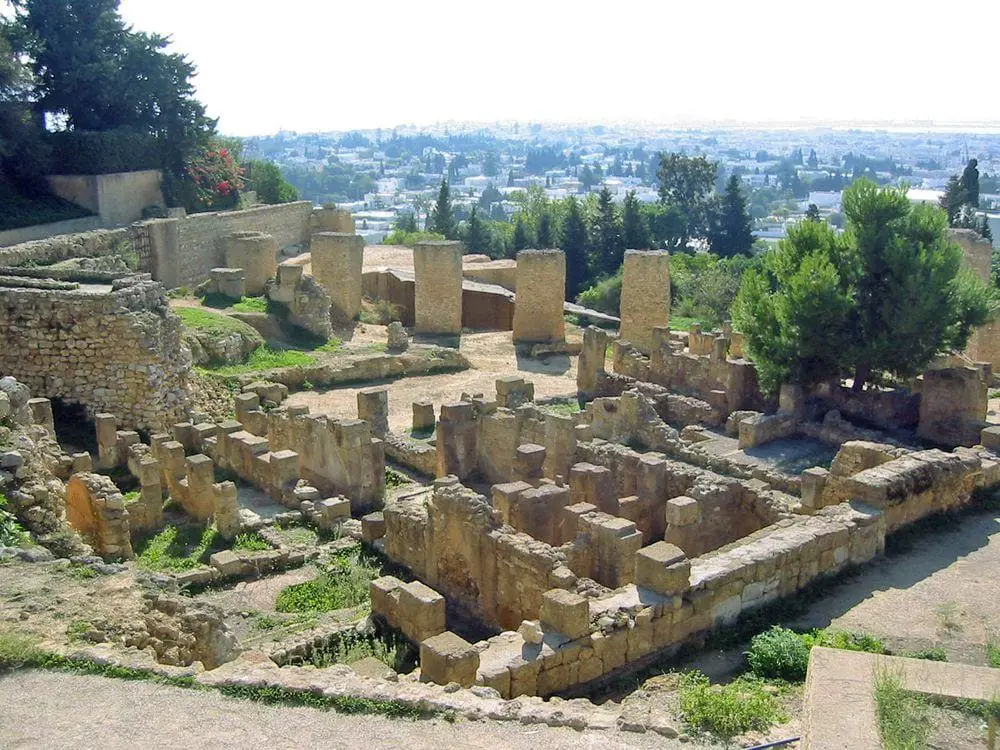
Conquest by Rome
Carthagian Empire developed in a harsh competition with other major powers in this region – Greeks in Syracuse, Numidians and Romans.
Greeks and Numidians were defeated by Carthagians but Romans persisted. The great Carthagian military commander Hannibal almost destroyed Roman Republic in the late 3rd century BC – but gradually the power of Carthagians decreased and Roman might – increased.
Finally Carthage and its citadel Byrsa was captured by Romans in 146 BC. For six terrible days Romans went from house to house and captured all people they could get – in total some 50 000 people from Carthage were taken. City was burned down and remnants were razed down.
Romans managed to eliminate almost all traces of the Punic city and culture and today it is not easy to study Punic period.
Roman period
After the capture of Carthage the nearby Utica (old rival of Carthage) was made capital of this region.
Nevertheless, the harbor of Utica silted up and Romans were forced to return to Carthage. A new city was built here in the time of Julius Caesar in 49 – 44 BC.
Carthage flourished again. At the beginning of our era, Carthage was one of the most important cities in the Roman Empire and here lived up to 500 000 people, the city was splendid and beautiful. It was one of the largest cities in the world in the preindustrial age, second only to Rome.
Ancient citadel – Byrsa – became a center of the city again and the forum was built here.
Carthage was one of the centers of Early Christianity as well. Here were organized important councils and many important milestones for Western Christianity were laid here, in an African city! Such milestones were term "Trinity" (Tertullian) and canon of Bible – the content of Bible.
Vandals, Byzantium and Arabs
In the 5th century AD Gaiseric, king of Vandals, captured the city. Carthage became a capital of the Vandal kingdom – an independent state with Arian religion – a branch of Christianity.
Vandals were defeated and the city was taken by Eastern Roman Empire in 533 AD, restoring the Chalcedonian Church. Extensive fortifications around the city were built. In the late 580s, there was established Exarchate of Africa – a region of the Eastern Roman Empire that was governed by the exarch. Carthage was one of the main sources of manpower and grain to Constantinopole.
Finally the city was destroyed by Muslims in 698 AD, who defeated Romans and Berbers. Arabs destroyed city walls, harbors, water supply. The city of Tunis was established nearby and since then it is the main city in this area.
Description
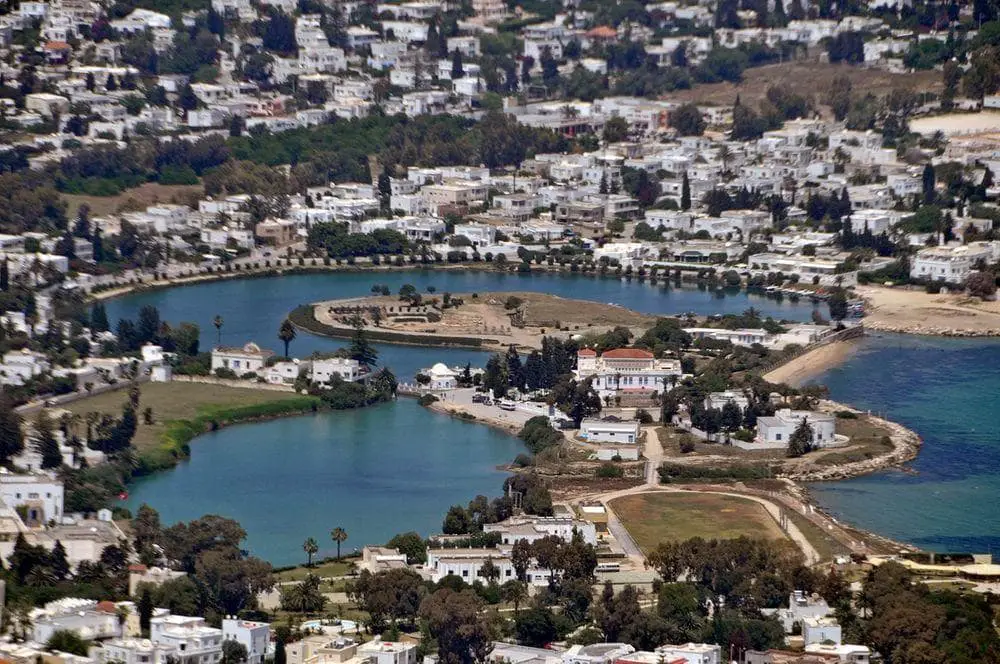
Carthage is located between Lake Tunis and the Bay of Tunis.
City in Punic times was divided into four equally sized residential areas with equal layouts. In the middle stood citadel – Byrsa.
At the times when Carthage was established and flourished, the area around the city was very fertile and rich with forest – a true paradise for Phoenicians who were highly skilled agrarians. They built two harbors in the city – one for military ships and another – for maritime trade. The walled tower overlooked both harbors.
Carthage had a huge necropolis, religious area, market places, council house, theater.
Punic heritage
The best-preserved parts of the oldest (Punic) part of the city are on the top of Byrsa hill. The remnants of these buildings from the early 2nd century BC have provided much information about the daily life in the city. The ground in some places was covered with mosaics, often with red mortar – a kind of Punic trademark. Streets in this district are some 6 m wide and are covered with clay.
The mysterious Tophet of Salammbó is another part of Punic heritage. Here have been found many steles with the symbol of Tanit – the main goddess of Carthaginians.
Carthage had massive, 37 km long fortification walls, which included also an agricultural area – Megara. There are few if any cities in the world with similar lengths of fortification walls. Especially impressive were walls over the isthmus which were never penetrated. Walls were destroyed by Romans, some smaller parts of the walls have been excavated near the sea.
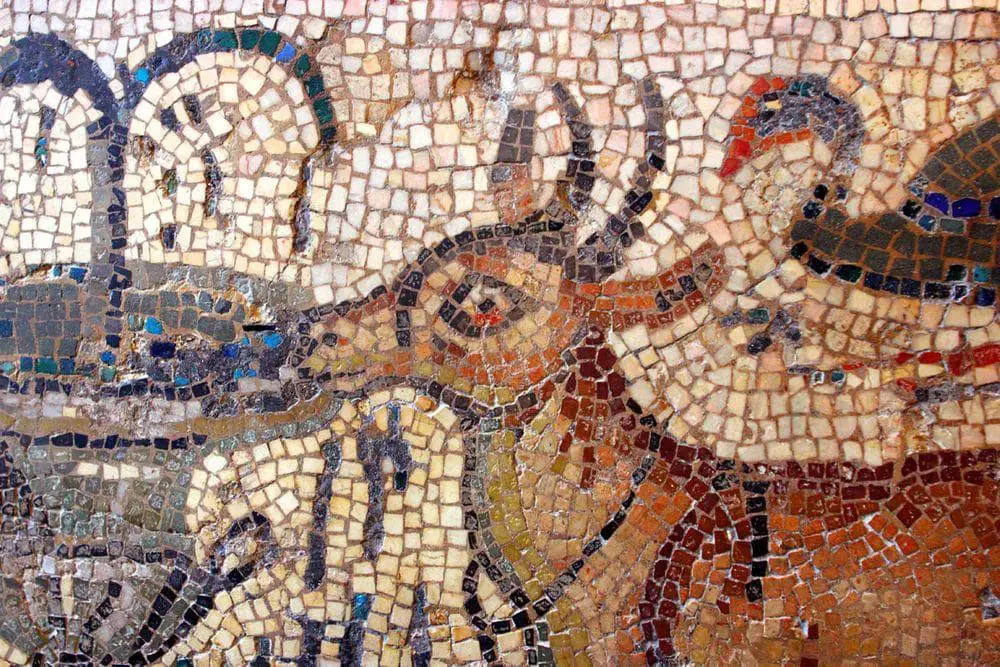
Roman heritage
Roman heritage of the city has been partly preserved – here are found ruins of forum, theatre, baths, Zaghouan aqueduct with massive cisterns, diverse temples and ruins of other buildings.
Not too much remains of Roman theatre which could accomodate 5,000 spectators. Even larger was amphitheatre with a capacity of 30,000 spectators – its ruins were plundered after the Arab conquest. Better preserved are Antonine Baths – once splending building which was constructed in AD 145 – 165 in area which suffered from great fire.
Encroachment of urban sprawl puts some danger on the remaining values of ancient Carthage. History goes on and ancient Carthage is getting a new cultural layer.
 Linked articles
Linked articles
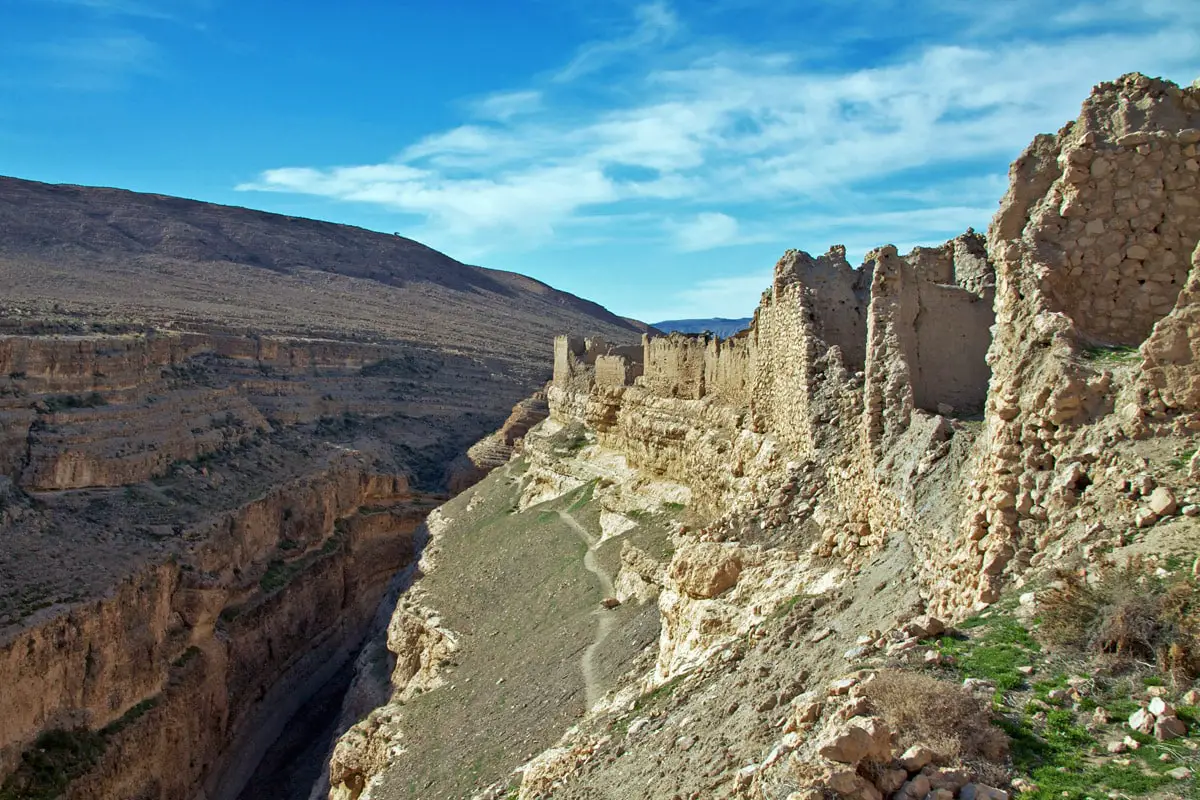
Wonders of Tunisia
Although Tunisia is smaller than its neighboring countries, it has a great history, the country is very rich in archaeological landmarks. Highlights of Tunisia are ruins of Punic, Roman, and Byzantine cities as well as medieval cities and towns.

Abandoned cities and towns
The main impression created by abandoned cities is intimate. This is a mixed feeling of sadness, unclear anxiety (“my city will not be eternal either”), and at the same time – inspiration from the abilities of our ancestors. Long ago, without electricity, paper, or different mechanisms, they managed to create magnificent structures, that covered many square kilometers.
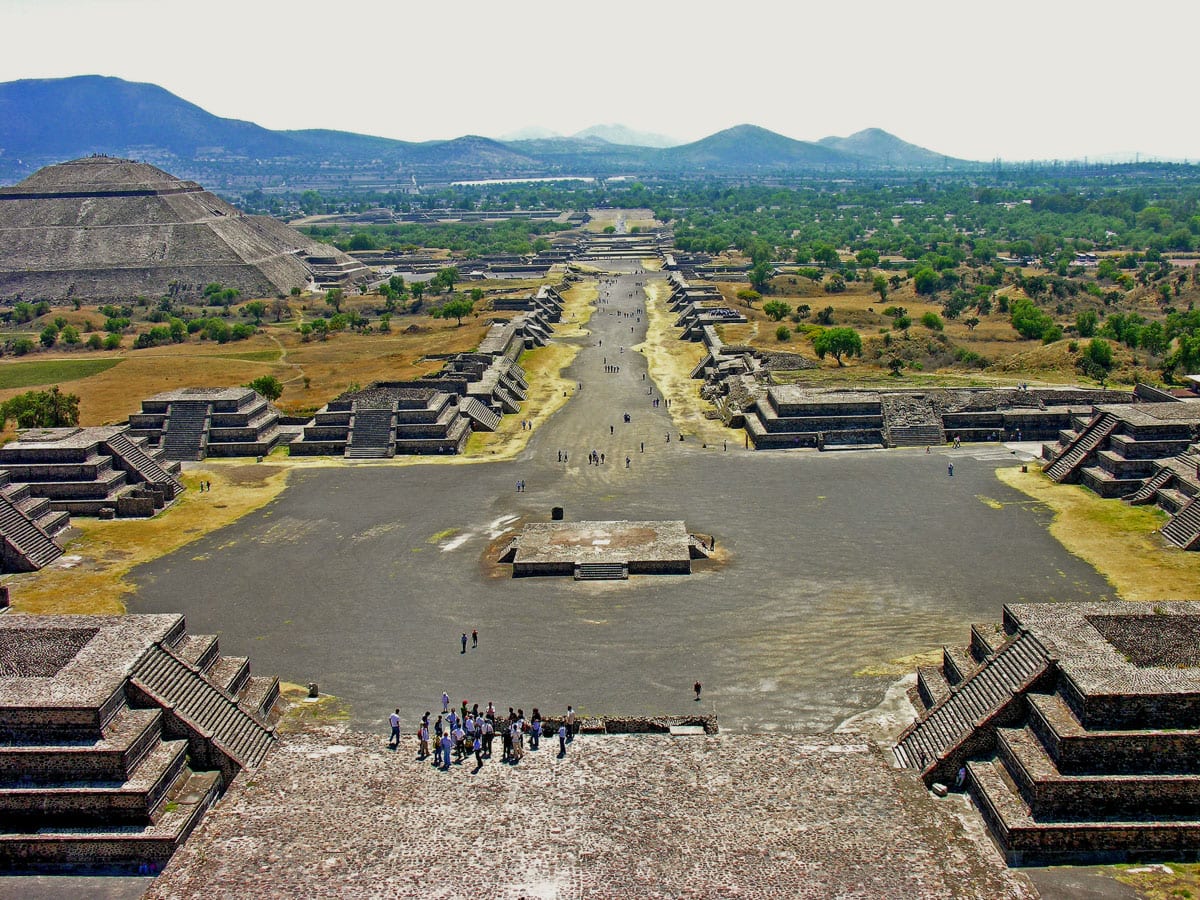
Ancient cities and towns
It turns out that urban planning is a very old profession. The urban fabric of ancient settlements – their structure and evolution gives a lot of food for thoughts about the nature of humans and civilization.
Wondermondo includes in the category of ancient cities and towns those settlements which have developed as urban areas at least 1500 years ago: around 500 AD.
 Recommended books
Recommended books
Carthage Must Be Destroyed: The Rise and Fall of an Ancient Civilization
Drawing on a wealth of new research, archaeologist, historian, and master storyteller Richard Miles resurrects the civilization that ancient Rome struggled so mightily to expunge. This monumental work charts the entirety of Carthage’s history, from its origins among the Phoenician settlements of Lebanon to its apotheosis as a Mediterranean empire whose epic land-and-sea clash with Rome made a legend of Hannibal and shaped the course of Western history.
Carthage
Carthage, now a ruin on the north coast of Africa, was the capital of one of the ancient world’s most powerful empires.

